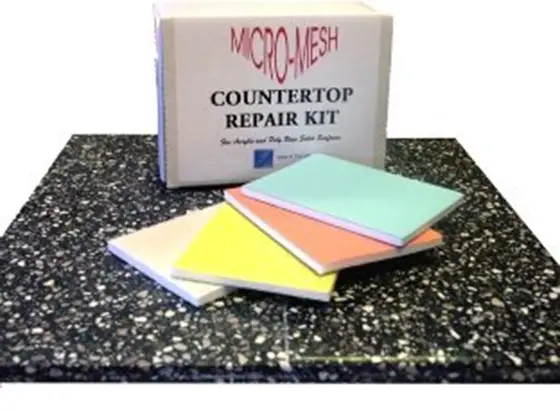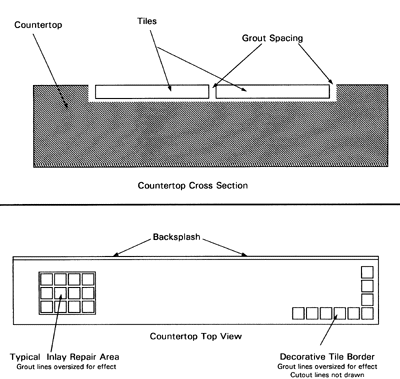The KCMA Connection
The kitchen cabinet (and bath) manufacturers realized some time ago that they had to gain the respect of consumers and designers (those who specify certain cabinets). To do so, they had to develop minimum quality standards which acted as a yardstick by which to measure cabinet quality.
They did this through their association, the Kitchen Cabinet Manufacturers Association (KCMA, www.kcma.org). This association developed a set of guidelines by which cabinet quality could be measured. These guidelines are met by performing over 60 separate tests on cabinets. These tests measure performance characteristics of a cabinet's structure, construction and finish.
It is extremely important for you to realize several things. First, a cabinet manufacturer can manufacture several different lines of cabinets. Just because one line passes the test doesn't mean that the manufacturer is allowed to certify all of the cabinet lines he produces. Each line must pass the tests separately.
Also, the testing standards used establish minimum quality guidelines. This means that you might not be satisfied with the quality of a cabinet, even though it has passed all of the tests! I know that homeowners have a wide range of quality standards. Some people are perfectionists and demand perfection from every other human being. Perfection is a tough standard.
Remember that the quality standards can be exceeded. In other words, a high quality manufacturer can go way beyond the standards in an effort to produce a high quality cabinet. This will cost more, however, you may see that the value is there. When looking for cabinets, look at all the different lines and cost ranges. See what really distinguishes one line or manufacturer from another.
The Cabinet Tests
As I mentioned before, there are over 60 different tests which are used in the certification process. Following is a list of some of the major components that are tested.
Construction
Cabinet joints are checked. They look to see that they are tight.
Hinges are checked. The connection points between the hinge, cabinet, and doors are checked for tightness.
Doors are inspected for alignment. There must be no binding when doors operate.
Face-framed cabinets must have rigid frames.
Frameless cabinets (those with full overlay doors and drawers) must be constructed of thick enough material so as to be rigid.
The materials used in constructing the cabinets must be suitable to resist grease, water, steam, solvents, detergents, etc.
All exposed edges of plywood or composition board must be filled and sanded, edge banded or otherwise finished.
All exterior nail holes or staple holes must be filled.
Base cabinets (those that rest on the floor) must have a toe space. This space must be a minimum two inches deep and three inches high.
Structure
Cabinet shelves and bottoms are loaded to 15 pounds per square foot. After seven continuous days of loading, the cabinet is checked for deflection and separations.
Wall cabinets must be able to support 500 pounds without failure.
The cabinets are subjected to several different impact tests to see how they perform. These tests are designed to simulate everyday events which send objects crashing into cabinets.
Cabinet doors are tested for performance. They are opened and closed through 25,000 cycles. After this test is completed, the door must be in as good a shape as it was in the beginning. The hinges must not be loose and the door must still be in alignment.
Drawers are tested the same way. They are loaded with 15 pounds and opened and closed 25,000 times. They also must perform flawlessly at the conclusion of the 25,000 cycles.
Finish
One of the finish tests involves placing a door in a hotbox for 24 hours. The temperature inside the box is 120 degrees F and the humidity is 70 percent. At the conclusion, the finish must show no appreciable discoloration, no blisters and no checking.
A similar test is performed by subjecting the door to alternating hot and cold temperatures. After five cycles, the finish must not be flawed.
Finishes are tested by applying vinegar, 100-proof alcohol, mustard, lemon juice, etc. for one hour. The finish must survive unaffected. If minor blemishes are present, they must be able to be removed with ordinary polishing methods.
As you can see, the tests are tough. However, you and your kids may be able to dish out greater punishment. You simply need to use common sense prior to making a purchasing decision.
KCMA Certified Cabinet Manufacturers
For an up-to-date list of certified cabinet manufacturers, go to the "Directory of Certified Cabinet Manufacturers" page of the KCMA web site.
Important Note!
Many of the listed manufacturers make several different lines of cabinets. They may choose to have only one line or several lines certified. Be careful!! Insist on written documentation that the cabinet line you are purchasing has, in fact, been certified by the KCMA testing program.
Unscrupulous vendors have been known to use bait and switch techniques in selling. They may have KCMA cabinets on display, however, you may buy a slightly different cabinet or a line which is not certified.

